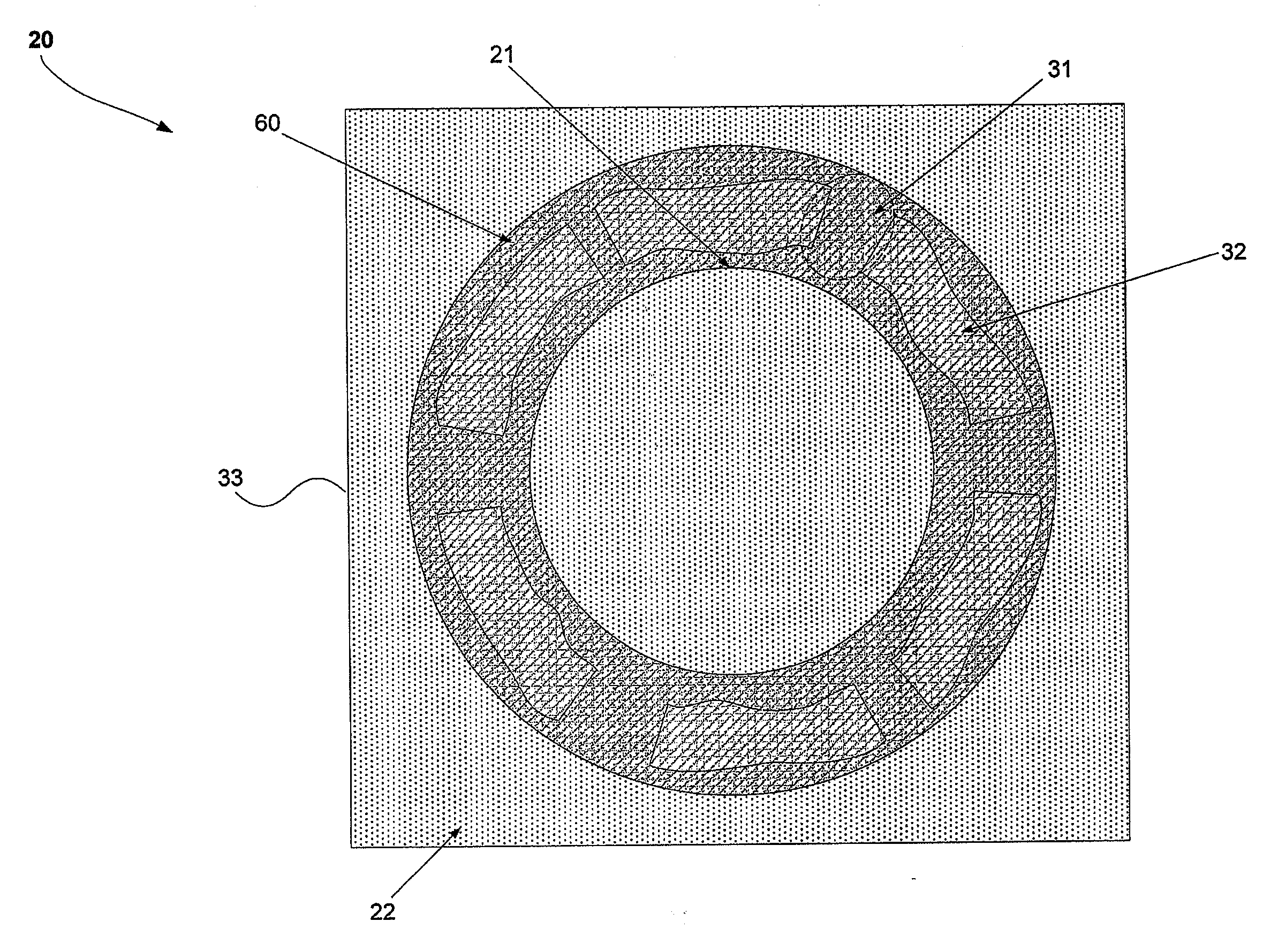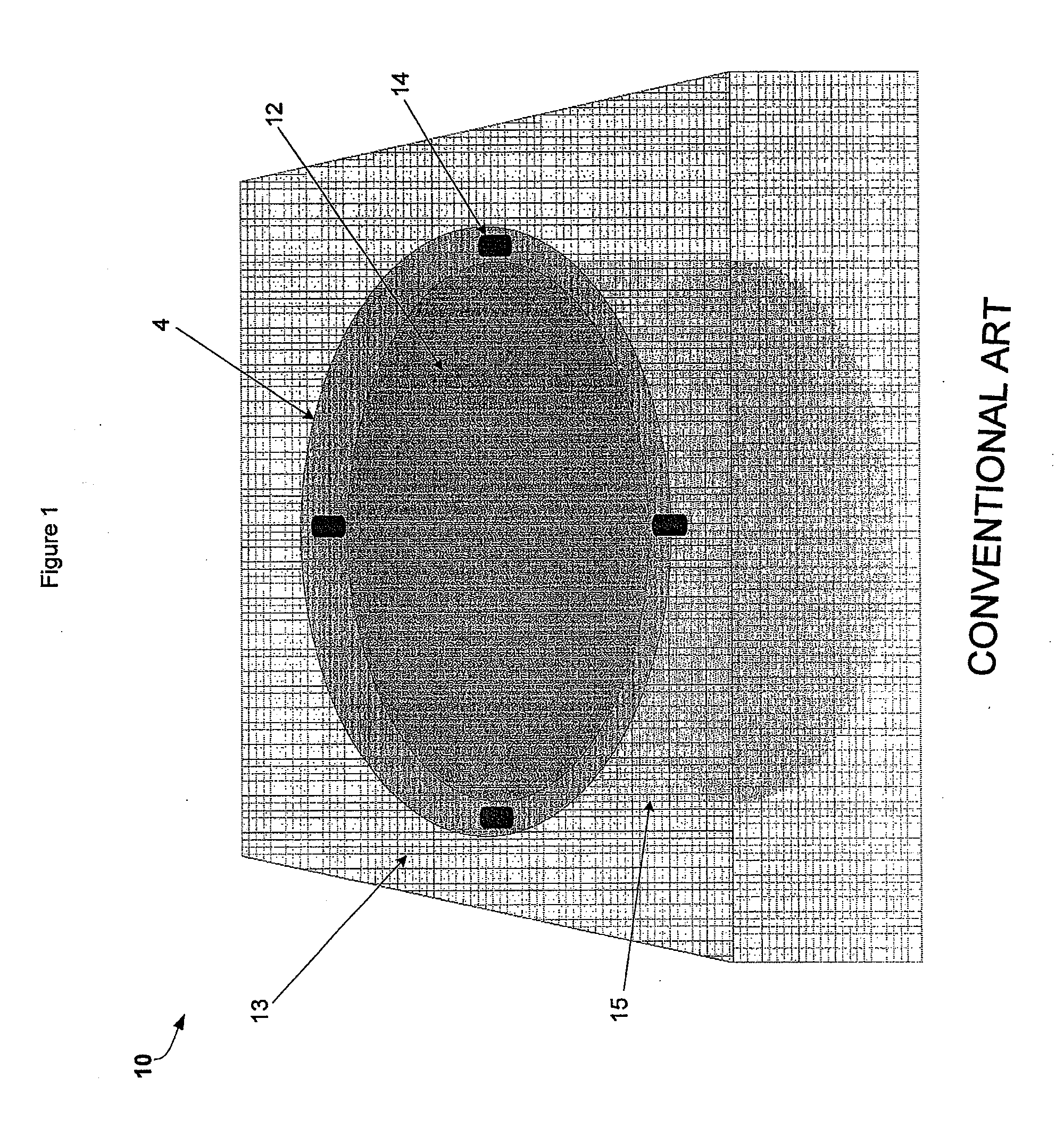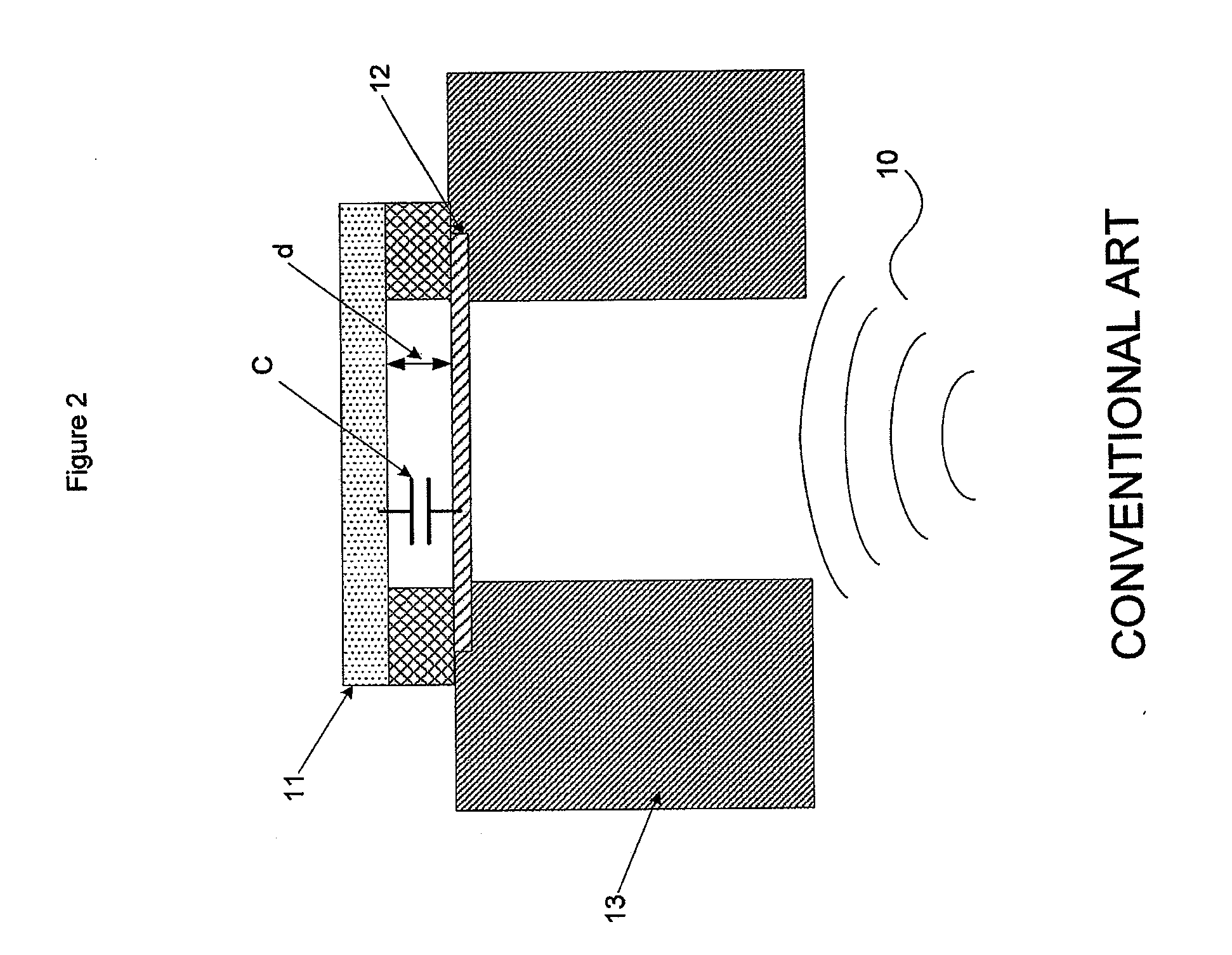MEMS stress concentrating structure for MEMS sensors
a technology of stress concentrating structure and mems sensor, which is applied in the direction of instruments, fluid pressure measurement, loudspeakers, etc., can solve the problems of affecting the performance of the instrument, the inability to compete with the two-chip mems microphone or the ecm microphone, and the parameter functions are often not very well controlled by the manufacturing technology
- Summary
- Abstract
- Description
- Claims
- Application Information
AI Technical Summary
Benefits of technology
Problems solved by technology
Method used
Image
Examples
Embodiment Construction
[0052]FIG. 3 shows the construction of a MEMS stress concentrator structure 20. The structure 20 includes a plate 33, usually having a rectangular outer boundary. The plate 33 can be formed by a single monolithic material or multi-layers of different materials as depicted in FIG. 4. The plate 33 has an outer region 22 and inner region 21 which is defined by slits 32 formed in the plate 33 by photolithographic patterning and etching. The slits 32 can be of any predetermined shape to suit the MEMS sensor design and accommodate internal stresses in the inner region 21 as well as stresses from external forces. The usual lateral dimension are on the order of tens to hundreds of microns. The width of the inner region 21 can range from a fraction of a millimeter to several millimeters. The inner region 21 is part of the plate 33. But the inner region 21 does not have to have the same thickness or vertical composition as the outer region 22. The inner region 21 can be altered in its vertica...
PUM
| Property | Measurement | Unit |
|---|---|---|
| pressure | aaaaa | aaaaa |
| temperature | aaaaa | aaaaa |
| noise voltage | aaaaa | aaaaa |
Abstract
Description
Claims
Application Information
 Login to View More
Login to View More - R&D
- Intellectual Property
- Life Sciences
- Materials
- Tech Scout
- Unparalleled Data Quality
- Higher Quality Content
- 60% Fewer Hallucinations
Browse by: Latest US Patents, China's latest patents, Technical Efficacy Thesaurus, Application Domain, Technology Topic, Popular Technical Reports.
© 2025 PatSnap. All rights reserved.Legal|Privacy policy|Modern Slavery Act Transparency Statement|Sitemap|About US| Contact US: help@patsnap.com



